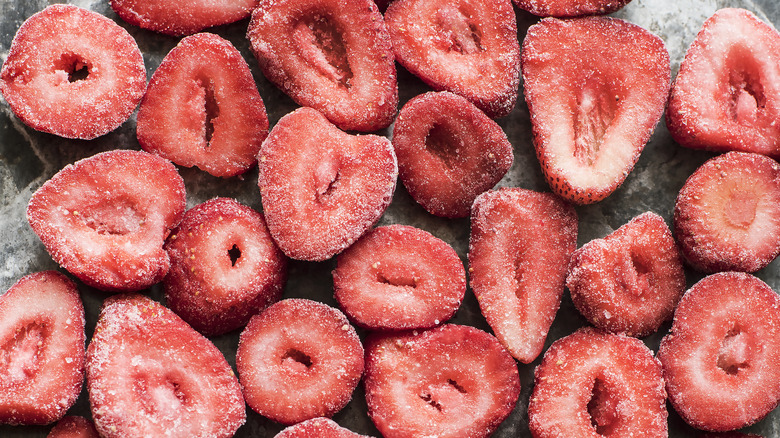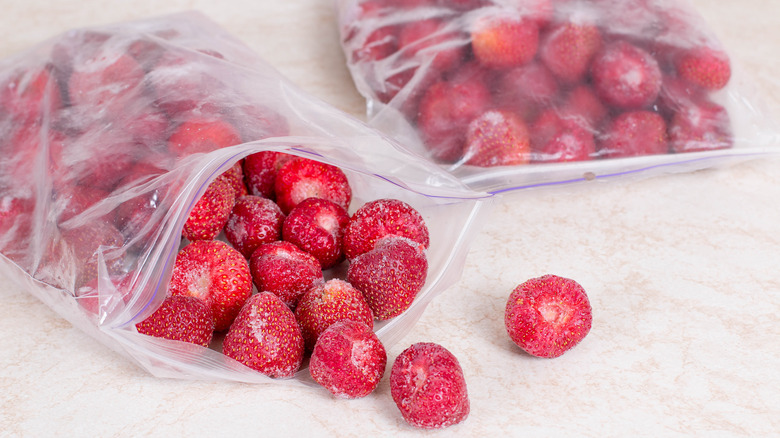Here's The Key To Freezing Strawberries For Later
Strawberry lovers, rejoice — the season of your favorite fruit can last all year round. As delicate as they are, strawberries don't last in the fridge for more than a week. If you've just returned from a bountiful strawberry picking date or have gotten a good deal for them at the farmer's market, you'll want to freeze your strawberries to ensure their later use in refreshing smoothies, desserts to sweeten up your life, and yummy breakfasts. There is something to be said about improperly frozen fruit, though. From sticking together in a big frozen lump that can't be separated to losing flavor because of freezer burn, we have (unfortunately) seen it all. To avoid these woes, you need to know this key step in freezing your strawberries: Freeze them on a baking tray first, and only then place them into a freezer-safe container.
Start by washing your fresh strawberries. Dry them well to prevent the formation of any ice crystals from residual water drops. Next, remove the green stems with a knife (also known as hulling the strawberries) and cut your strawberries into halves. Place them on a baking tray lined with some parchment paper, and make sure they have enough space without touching. Into the freezer they go! They'll need a few hours to properly freeze during this first stage, but you can also leave them overnight. When they're fully frozen, transfer the strawberries into a freezer-safe bag and use them within six months.
Package the strawberries tightly to prevent freezer burn
Freezer burn can significantly tarnish the quality of your fruit, so it's best to take precautions to avoid it. While freezer-burned food is still safe to eat, the texture, flavor, and even color are compromised by air exposure in the freezer. When food is exposed to a lot of cold air, too much moisture can evaporate, and certain parts of the food dry out. Package the strawberries very tightly to prevent exposure; squeeze as much air as you can out of the freezer bag. Bonus points if you have a vacuum sealer. The less air that remains trapped in the bag, the better chances your strawberries have of escaping the pesky freezer burn.
As they thaw, the frozen strawberries will inevitably change in structure. They'll be softer and more watery than fresh strawberries. The perfect recipes are therefore the ones in which they get cooked, baked, or blended. Most of the time, you won't even need to defrost them before using them as an ingredient — like in this dreamy, five-ingredient strawberry cinnamon smoothie. And finally, the sooner you freeze them, the more freshness you'll preserve, so don't leave them sitting in the fridge unnecessarily when there's space in your freezer.

